
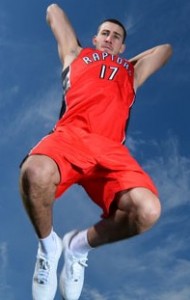 The silence following Jonas Valanciunas’ contract extension was deafening.
The silence following Jonas Valanciunas’ contract extension was deafening.
When the Toronto Raptors gave a reported $64 million over four years to Valanciunas, there were no proclamations from pundits that the NBA’s financial sky was falling. Owners didn’t start forming plans of collusion. No one drew comparisons to Jim McIlvaine.
On the other side, there have been no whispers that Raptors GM Masai Ujiri engineered another steal. Virtually no one has suggested that Valanciunas got fleeced. Agent Leon Rose – who days later landed a four-year, $52 million extension for 2012 draft classmate Michael Kidd-Gilchrist – probably doesn’t have to worry about retaining Carmelo Anthony and Chris Paul as clients.
Does the money sound nuts now? In a vacuum, yes. Valanciunas has yet to average more than 12 points or nine rebounds, had fewer double-doubles last season than Derrick Favors and often resembles a mailbox in pick-and-roll defense.
At the same time, the 7-3 Valanciunas is just 23 years old, has shown improvement over his first three seasons and had the best shooting percentage last season of anyone not named DeAndre Jordan. Midway through his new deal, he will be consuming less than 15 percent of Toronto’s cap and could look like a downright bargain.
The lack of buzz surrounding Valanciunas’ deal comes from the fact that it serves both sides equally well. The Raptors locked up a young asset who could outperform his contract. Valanciunas has the wealth and security of a long-term deal that will allow him to focus on basketball.
This is the new normal of the NBA, where $16 million per season doesn’t even approach the lowest maximum salary available to free agents. With the infusion of money from the new TV deal projected to push the salary cap to $90 million next summer, max deals for free agents with 0-6 years experience will start at $20.4 million.
Some projections have the salary cap jumping to $107 million in the summer of 2017, which means low-end max salaries will start somewhere north of $24 million. Two players – Kobe Bryant and Joe Johnson – currently exceed that threshold. Two years from now, more than two dozen players will.
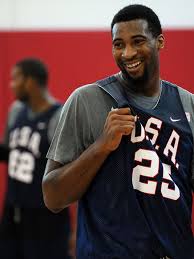 However, one of the NBA’s long-standing axioms is that centers always get paid, regardless of the league’s financial climate or conventional wisdom about style of play. And Valanciunas’ deal establishes a new baseline for big men.
However, one of the NBA’s long-standing axioms is that centers always get paid, regardless of the league’s financial climate or conventional wisdom about style of play. And Valanciunas’ deal establishes a new baseline for big men.
Valanciunas’ deal won’t impact Andre Drummond, the best center eligible for an extension this summer (Anthony Davis is a power forward, folks) who already was ticketed for a max contract. But it could impact others.
For example, if Valanciunas is worth $16 million annually to the Raptors, what is Tyler Zeller (10.2 ppg, 5.7 rpg, .549 FG) worth to the Boston Celtics? What are stretch-5 players Meyers Leonard (.420 3FG) and Donatas Motiejunas (.368 3FG) worth to Portland and Houston, respectively? What is Festus Ezeli – the heir apparent to injury-prone 30-year-old Andrew Bogut – worth to the defending champion Golden State Warriors?
Next year’s extension-eligible big men salivating at that starting salary of $24 million include Rudy Gobert, Nerlens Noel, Mason Plumlee, Steven Adams, Kelly Olynyk and Gorgui Dieng.
The 2016 free agency class includes veteran centers Dwight Howard, Al Horford, Joakim Noah, Al Jefferson and Roy Hibbert. It also includes Cavs pivot Timofey Mozgov, who had three double-doubles in the Finals, 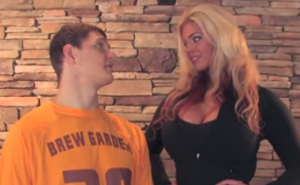 and Miami Heat jumping jack Hassan Whiteside, who could be in line for the biggest raise in NBA history (he’ll made $980,000 in the upcoming season) if he develops any maturity.
and Miami Heat jumping jack Hassan Whiteside, who could be in line for the biggest raise in NBA history (he’ll made $980,000 in the upcoming season) if he develops any maturity.
The baseline established by the Valanciunas deal adds to an already sticky situation regarding extensions for the 2012 draft class. The spike in the salary cap will leave just a handful of teams without room to offer a max contract to a free agent from another team, and all of them are championship contenders – Oklahoma City, Cleveland, San Antonio, Houston, the LA Clippers and Golden State. Virtually every other team will either have enough room for a max player or be able to manipulate their payroll to create the room.
The Celtics could sign Zeller to a four-year, $40 million extension and take him off next summer’s market, avoiding a bidding war that could make them overpay to retain him. But if they do sign Zeller now, it will cost them $3.5 million in potential cap room – the difference between Zeller’s new salary and his current 2016 cap hold of $6.5 million.
While $3.5 million represents less than 4 percent of next summer’s projected cap, it looks a lot bigger when it stands in the way of offering a free agent a max contract that he can get from any number of teams.
Two players from the Class of 2012 – Anthony Davis of New Orleans and Damian Lillard of Portland – already have received max contract extensions with annual salaries that clearly illustrate the historic 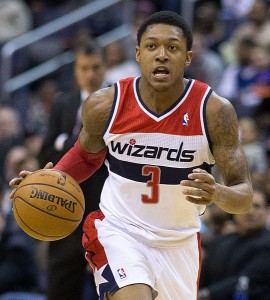 increase the cap will make next summer. Rose’s clients bring the total to four. And two more players – Drummond and Washington guard Bradley Beal – also could be in line for max extensions.
increase the cap will make next summer. Rose’s clients bring the total to four. And two more players – Drummond and Washington guard Bradley Beal – also could be in line for max extensions.
In all, 23 first-round picks are eligible for extensions, including two from 2011 – Valanciunas and Motiejunas. Of those 23, 19 are spread among just eight teams. Six teams have two players eligible for extensions, while Portland and Boston have three apiece.
Below is a look at where members of the 2012 draft class stand in terms of receiving extensions. While the recent signings of Valanciunas and Kidd-Gilchrist may suggest a flurry is coming, most likely will go right down to the October 31 deadline, such as Kemba Walker last year.
1. Anthony Davis, New Orleans (5 years, $143 million): Having changed coaches after the team’s first playoff trip in three years, Pelicans GM Dell Demps wasted no time securing Davis, whose presence keeps an otherwise nondescript team highly relevant for the next six years. The sheer numbers were startling, but keep in mind that they assume 7.5 percent annual raises off a first-year salary of $24.9 million – or a projected 30 percent of the cap – based on the “Derrick Rose Rule.” To receive that increase, Davis would have to (a) be selected as an All-Star starter; (b) make one of the three All-NBA teams; or (c) be named MVP. Barring injury, none of those seem out of the realm of possibility. In fact, they seem downright likely.
2. Michael Kidd-Gilchrist, Charlotte (4 years, $52 million): The acquisition of Nicolas Batum means MKG could be seeing considerable time at shooting guard, raising the question of whether he shoots well enough. He did make a dramatic leap last season, sinking 50 percent of his shots from 10-16 feet after languishing below 20 percent through his first two seasons. He is a superb defender and turns just 22 in September. A four-year deal at around $50 million sounds about right and still allows the Hornets some flexibility in free agency. UPDATE: We pretty much nailed it.
3. Bradley Beal, Washington: The Wizards are in a bit of a tricky spot with Beal, who probably warrants a max extension. Although that will give him a higher salary than John Wall – who seems to be a bit bothered by that sort of thing – it is the right move to make if they want to lure Kevin Durant, because it will illustrate that the pieces to compete for a championship are in place and will be for a long time. UPDATE: Wizards management isn’t convinced Beal is a max player.
4. Dion Waiters, Oklahoma City: There is no way he is getting an extension. Thunder GM Sam Presti didn’t extend Reggie Jackson last summer and ultimately traded him, making his second contract Detroit’s conundrum. Waiters is sitting in a slightly better position than Jackson, because his restricted free agency comes when the payroll has more flexibility. But if someone offers him eight figures annually next summer, Presti may let him walk. UPDATE: Surprising no one, the penny-pinching Thunder are open to an extension – at a discount.
5. Thomas Robinson, Brooklyn: The Nets are his sixth team in three years, and he already is on a year-to-year plan, signing for the minimum. Robinson actually wasn’t bad finishing last season with Philly (8.8 ppg, 7.7 rpg, 18.5 mpg in 18 games). But until he understands that his long-term role is as an energy big off the bench, we will continue to see empty promises like this one. Not the bust of this draft but the bust of the lottery.
5A. Jonas Valanciunas, Toronto (4 years, $64 million): The Raptors have allowed bigs Amir Johnson, Tyler Hansbrough and Chuck Hayes to walk in free agency, practically leaving Valanciunas on an island as they shift to small ball. He is not a top-10 center by any stretch of the imagination; he’s not even a double-double guy, and his rim protection leaves much to be desired. But it’s hard to imagine GM Masai 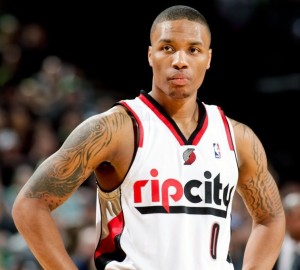 Ujiri playing chicken with his only viable big man, who is just 23 years old and would probably get a max offer sheet on the open market. Don’t be surprised if he is Toronto’s highest-paid player a year from now.
Ujiri playing chicken with his only viable big man, who is just 23 years old and would probably get a max offer sheet on the open market. Don’t be surprised if he is Toronto’s highest-paid player a year from now.
6. Damian Lillard, Portland (5 years, $117 million): This summer’s mass free agency exodus from the City of Roses has GM Neil Olshey rebuilding the Trail Blazers around Lillard, and he has six years to do it after giving his All-Star point guard a max extension. That figure could jump to Davis’ money if Lillard can snag another All-NBA selection to go with his 2014 Third Team nod. That will be difficult playing the league’s deepest position for a team likely headed to the lottery. But if he doesn’t, he won’t exactly be cleaning windshields at traffic stops.
7. Harrison Barnes, Golden State: Before trading Gerald Wallace, the defending champions were set to may enter the 2015-16 season with an NBA-record six players making at least $10 million. Given MKG’s deal, Barnes will be next to reach that threshold. He been remarkably durable thus far while showing improvement through his first three seasons and has had some big postseason games. He also gives coach Steve Kerr the luxury of bringing Finals MVP Andre Iguodala off the bench. Pencil him in for $60 million over four years. UPDATE: No talks, but Barnes wants to stay in the Bay.
8. Terrence Ross, Toronto: Of the eight teams with two or more players eligible for extensions, none has a higher pairing than the Raptors. If Danny Green is a $10 million player, then the 24-year-old Ross probably is, too. But the bigger question is whether he gets that money from the Raptors, who (a) added DeMarre Carroll, whose presence makes Ross a fifth option – or maybe even a reserve; (b) have to hold onto Valanciunas, as stated above; and (c) should be anticipating an opt-out by DeMar DeRozan, who will be looking to double his $10.1 million salary. UPDATE: Raptors GM Masai Ujiri wants to get an extension done for Ross as well.
9. Andre Drummond, Detroit: Max salary, and probably for five years. It is clear that this is who Stan Van Gundy is building around, and he gets a bit of a break because Drummond cannot qualify for the upgrade via the Derrick Rose Rule. If you’re wondering why a max contract should go to someone who doesn’t make free throws, has a flat defensive rating and diminishing rating differentials, just look at what DeAndre Jordan received in free agency. Drummond will be just 22 when next season starts, is already the NBA’s fiercest rebounder and 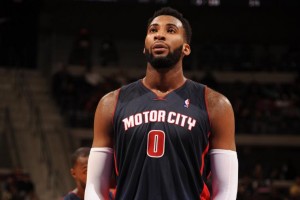 should be more effective on offense spending an entire season alongside Reggie Jackson. The only question is whether Van Gundy can talk Drummond into waiting until next summer and saving about $12 million against his cap hold to start the free agent frenzy. UPDATE: Hard to fathom this suggestion that says an extension may not be for the max.
should be more effective on offense spending an entire season alongside Reggie Jackson. The only question is whether Van Gundy can talk Drummond into waiting until next summer and saving about $12 million against his cap hold to start the free agent frenzy. UPDATE: Hard to fathom this suggestion that says an extension may not be for the max.
10. Austin Rivers, LA Clippers: He hasn’t come close to living up to his billing or his draft selection. His fourth-year option was not picked up by New Orleans and he already has been on three teams. He just signed a two-year, $6.4 million deal with the Clippers, the most he could possibly receive and a considerable hit on their tax bill. It’s no coincidence that his newfound stability has come with a team on which his father is the GM.
11. Meyers Leonard, Portland: Now that Lillard is locked up, this has to be the next priority for Olshey. And he needs to do it now in order to save some serious coin. Leonard may have averaged 5.9 points in 15.4 minutes last season, but he also was a 50-40-90 guy (look it up) and averaged 14 and 10 per 36 minutes, which is about what he will be playing this season. His .420 mark from the arc would have ranked in the top 10, and at 7-1 he can run like the wind. He is a Most Improved Player candidate who will be a lot more expensive – and attractive to other teams – next summer. Four years, $40 million seems right.
12. Jeremy Lamb, Charlotte: He will forever be remembered as the guy the Thunder sold as James Harden’s replacement, which put unfair pressure on him. Lamb played his way out of the rotation more than once during his three seasons in Oklahoma City. Maybe he can reclaim his confidence with the Hornets, who need his shooting. He’s definitely playing for his next contract, but it won’t be an extension.
13. Kendall Marshall: He already has been waived three times and is trying to work his way back from a 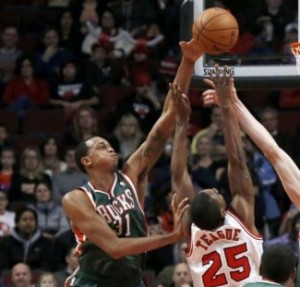 torn ACL in January. He hopes to be ready for a possible invitation to a training camp in October.
torn ACL in January. He hopes to be ready for a possible invitation to a training camp in October.
14. John Henson, Milwaukee: The Bucks supposedly were close to reaching an agreement on an extension with Henson in July but have not gotten there yet. Over the last two years, GM Jon Hammond has done an excellent job of making Milwaukee relevant again, but he has to be prudent here. While Henson has value as a third big, he is not a starter and should not be paid starter money. Hammond also has looming extensions – likely at the max or close to it – for Giannis Antetokounmpo next summer and Jabari Parker in the summer of 2017. UPDATE: Hammond considers Henson part of the core. he may regret not getting this done earlier.
15. Moe Harkless, Portland: Our profound apologies. We actually forgot to include him when we first published this list. Don’t be surprised if Olshey forgets him as well when it comes to extensions. That is not to say Harkless isn’t part of the plan going forward in Portland; although his numbers have declined, he is just 22 and should have a chance to re-establish himself this season. He will have to do that in order to receive a qualifying offer.
16. Royce White: He is unquestionably the biggest bust of this draft. No player in recent memory created more headaches while having done less than White, who came into the NBA looking to argue with anyone and everyone about his anxiety issues rather than working with the Houston Rockets on how to manage his disorder. He did not play in an NBA game during his rookie season, which was littered with refusals to report to the D-League and suspensions. He was traded after one season to the Philadelphia 76ers, where he had a legitimate chance to make a ragtag roster but was cut in training camp. He was signed by the Sacramento Kings later that season, amassing one missed shot, zero rebounds, two fouls and nine minutes over three games. He played for the Clippers in the Orlando Summer League but did next to nothing. An unmitigated disaster.
17. Tyler Zeller, Boston: The first of three players on this list who play for the Celtics and probably the one with the best chance of receiving an extension. But that doesn’t mean he will get one. GM Danny Ainge has been unable to land the big fish thus far this summer, which means either he now has to do so via a trade, which could involve the 25-year-old Zeller and his 19.01 PER, or hoard his cap room for next summer’s free agent bonanza. Neither route seems to indicate that a second contract for Zeller is on the way anytime soon, although he appears worthy of a qualifying offer. UPDATE: Sherrod Blakely says an extension is not out of the question.
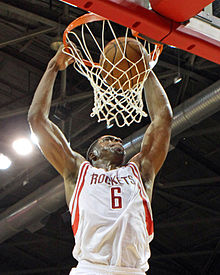 18. Terrence Jones, Houston: The first of a pair of Rockets on this list, Jones’ future importance was increased by Josh Smith’s departure to the Clippers. However, his ability to secure an extension was decreased by the acquisition of Ty Lawson, which took Houston’s potential 2016-17 payroll to $89 million, a figure that does not include Dwight Howard’s expected opt-out and new, higher salary. There are not many players who can be effective from both the short corner and the deep corner, but Jones is one of them. It may take $12 million annually to secure him, and he will be popular next summer, even as a restricted free agent.
18. Terrence Jones, Houston: The first of a pair of Rockets on this list, Jones’ future importance was increased by Josh Smith’s departure to the Clippers. However, his ability to secure an extension was decreased by the acquisition of Ty Lawson, which took Houston’s potential 2016-17 payroll to $89 million, a figure that does not include Dwight Howard’s expected opt-out and new, higher salary. There are not many players who can be effective from both the short corner and the deep corner, but Jones is one of them. It may take $12 million annually to secure him, and he will be popular next summer, even as a restricted free agent.
19. Andrew Nicholson, Orlando: Since being drafted, Nicholson was outworked and outplayed by second-round pick Kyle O’Quinn while his production dropped each season. In the last two offseasons, the Magic have either signed or drafted Aaron Gordon, Channing Frye and Jason Smith, all of whom play some power forward. And Orlando also re-signed Tobias Harris, who plays the 4 in small ball lineups. Nicholson will be lucky to get a qualifying offer.
20. Evan Fournier, Orlando: Another member of the Magic, Fournier is coming off the best – albeit injury-shortened – season of his career. His defensive deficiencies probably will prevent him from ever becoming a consistent starter in this league, but he still has projected value as a backup shooting guard who brings a stroke (career 38 percent from deep). Given that Orlando already has Victor Oladipo and just drafted Mario Hezonja, Fournier’s future is probably elsewhere. But he may get a qualifying offer. UPDATE: Steve Kyler says there have been extension talks.
20A. Donatas Motiejunas, Houston: He is not quite the player that Jones is but he’s not exactly cat litter, either. He also has the added feature of being a legitimate 7-footer, providing insurance for Howard that the 6-9 Jones cannot. But when it comes to an extension, he is in the same boat as Jones following the arrival of Lawson – and also is coming off back surgery. As a 7-footer with 37 percent marksmanship from deep, he is a highly desirable commodity in a space-and-pace league and probably worth low to mid-eight figures annually as well.
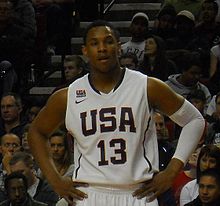 21. Jared Sullinger, Boston: See No. 17, then factor in that Sullinger – while more versatile than Zeller – also has a history of injury and weight issues. He would also be a somewhat desirable return piece if Ainge were able to swing a big trade during what’s left of the offseason. Unless he has a disastrous season, Sullinger also merits a qualifying offer. But I would be surprised if both he and Zeller are still Celtics a year from now.
21. Jared Sullinger, Boston: See No. 17, then factor in that Sullinger – while more versatile than Zeller – also has a history of injury and weight issues. He would also be a somewhat desirable return piece if Ainge were able to swing a big trade during what’s left of the offseason. Unless he has a disastrous season, Sullinger also merits a qualifying offer. But I would be surprised if both he and Zeller are still Celtics a year from now.
22. Fab Melo: Not one of Ainge’s finer moments. Melo played just six NBA games and is part of a lasting trend of underachieving NBA players from Syracuse. Since Carmelo Anthony went third overall in the 2003 draft, eight players from Syracuse have been drafted in the first round – Hakim Warrick (2005), Donte Greene (2008), Jonny Flynn (2009), Wesley Johnson (2011), Waiters (2013), Melo (2013), Michael Carter-Williams (2014) and Tyler Ennis (2015). The only one close to getting an extension is Carter-Williams, who has regressed and been traded since his Rookie of the Year campaign.
23. John Jenkins, Mavericks: He showed a bit of promise as a rookie. But his development was stalled by an injury in 2013-14, and the Hawks did not pick up his fourth-year option last year, making him an unrestricted free agent. He was buried on Atlanta’s depth chart last season but drew interest from some teams this summer before landing in Dallas on a minimum deal. Still just 24.
24. Jared Cunningham: Here’s the totals: Six teams, 40 games, 77 points. He actually played 19 of those 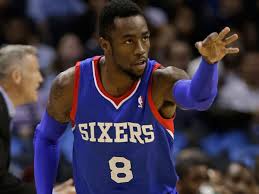 games for the Clippers this past season, further accentuating how bad their bench truly was. Cunningham was waived by the Sixers in January and it has been crickets since.
games for the Clippers this past season, further accentuating how bad their bench truly was. Cunningham was waived by the Sixers in January and it has been crickets since.
25. Tony Wroten, Philadelphia: He’s not going to get an extension because (a) he’s coming off a torn ACL and (b) extensions aren’t part of Sam Hinkie’s process. But he has been one of the few “assets” Hinkie has traded for that is actually a legitimate NBA player, analytics be damned. As long as Wroten, 22, is fully recovered, he has a long-term future in this league as a third guard and should at least be given a qualifying offer.
26. Miles Plumlee, Milwaukee: The Bucks looking to lock up Henson is not a good sign for Plumlee, who already is on his third team and probably would not have had his third- and fourth-year options picked up had he not been a 7-footer. After what amounted to a redshirt rookie season in Indiana, he was traded to Phoenix and caught the league off guard by showing he could play a little bit. But he regressed last season and was traded again. He may get a qualifying offer, but only because the Bucks have a boatload of cap room.
27. Arnett Moultrie: One of the many victims of Hinkie’s ongoing purge, Moultrie was traded to the Knicks and subsequently waived last October. Two months later, he signed with Jiangsu of the CBA but didn’t make much of an impression on our man in the Far East.
28. Perry Jones, Boston: We initially had him listed as a prime trade candidate, which is exactly what Oklahoma City did to lower its luxury tax bill. Jones had some moments early last season when he replaced the injured Durant but mostly is known around these parts for his propensity for trillions. Given Boston’s 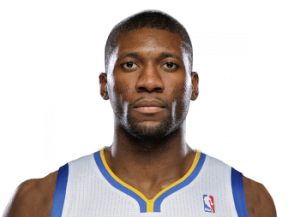 frontcourt depth, other potential restricted free agents and Ainge’s desire to land a big fish in free agency next summer, Jones would be lucky to even receive a qualifying offer.
frontcourt depth, other potential restricted free agents and Ainge’s desire to land a big fish in free agency next summer, Jones would be lucky to even receive a qualifying offer.
30. Festus Ezeli, Golden State: The backup center might be the second straight last pick of the first round to get a sizable second contract, following Jimmy Butler. He also may have to enter restricted free agency to get it, also like Butler. You have to figure that when it comes to possible extensions, Barnes would be GM Bob Myers’ priority. But there were times during the postseason where Ezeli proved more futile in 1-in, 4-out lineups than Andrew Bogut, who is 30 and injury-prone. He is a lock to receive a qualifying offer, and Golden State may have to approach eight figures annually to keep him. UPDATE: Without mentioning what it would coast, GM Bob Myers says Ezeli is a keeper.
Chris Bernucca is the managing editor and a featured columnist for SheridanHoops.com. Follow him on Twitter.